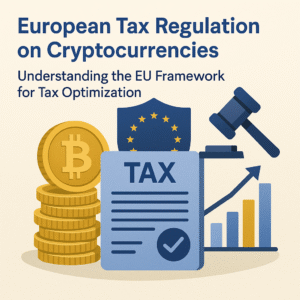ACX Crypto/Functionality, Analysis & Smart Investment Guide
Key takeaways
- Short-term volatility : ACX is sensitive to market cycles and regulatory announcements.
- Key influence factors : Strategic partnerships, Web3 integration, institutional adoption.
- Long-term growth potential : Real-world use cases and an expanding ecosystem.
- Positioning vs. Major cryptos : ACX stands out through its focus on decentralized infrastructure.
What is ACX ?
- Symbol:ACX
- Category : UtilityToken–Web3Infrastructure
- Primary function : power transactions and interoperability within the Across Protocol
How Does ACX Work ?
Technical Overview Made Simple
The Across protocol is designed for optimized cross-chain infrastructure, making asset transfers between chains faster, cheaper, and more secure than traditional bridges. Rather than locking assets on one chain and replicating them on another, Across uses centralized liquidity on Ethereum, relayers, and an incentive model.Technology Stack
- Consensus type : Security is inherited from Ethereum (Proof of Stake), with relayers handling bridging.
- EVM compatibility : Fully EVM-compatible, easy to integrate into dApps.
- Native interoperability : Supports major L2s like Arbitrum, Optimism, Base, and Polygon.
- Layer 2 optimized : Designed to work efficiently with scaling solutions.
ACX Token Use Cases
- Governance : Token holders vote on protocol development.
- Economic incentives : Relayers are rewarded in ACX.
- Fee model : A portion of bridging fees is paid or redistributed in ACX.
Key Features
- EVM-compatible
- Multi-chain DeFi optimized
- Near-instant transfers via economic relayers
- Security rooted in Ethereum
ACX Project History : Origins, Team & Key Milestones
The Across protocol was launched in November 2021 by Risk Labs, the team behind UMA (Universal Market Access). Headquartered in the United States, Across was developed to create a fast, efficient, and secure bridging protocol—without a traditional ICO. The ACX token was distributed via an airdrop to early adopters and the community.Timeline of Key Events
- Q4 2021 : Across goes live on Ethereum, supporting Arbitrum.
- 2022 : Launch of the ACX token and community airdrop.
- 2023 : Expanded support for Optimism, Base, and other EVM chains.
- 2024 : Launch of the Across DAO, enabling token holder governance.
Platforms to acx
Founders and Team
- Hart Lambur : Co-founder of Risk Labs; former Goldman Sachs trader and DeFi product expert.
- Allison Lu : Co-founder of UMA ; financial engineer and ex-Goldman Sachs.
- Kevin Chan : Lead engineer with deep expertise in blockchain architecture.
What Makes [Nom cryptomonnaie] Unique?
- Efficiency : Central liquidity on Ethereum means no need for duplicated funds.
- Security : Fewer validators = reduced attack vectors.
- Low fees : Smart design and volume aggregation minimize user costs.
- Speed : Transfers complete in under 30 seconds in most cases.
Use Cases and Competitive Edge
ACX and the Across protocol aim to solve a key Web3 challenge : seamless and secure blockchain interoperability. Most traditional bridges are costly, slow, and complex. Across offers a simpler and more robust model.Real-World Use Cases
- Cross-chain arbitrage DeFi traders can instantly transfer tokens between chains to take advantage of price discrepancies—faster and cheaper than typical bridges.
- Multi-chain liquidity management Fund managers can move assets across chains to chase higher yields or optimize cost structures with minimal friction.
- Seamless dApp integrations dApps can embed Across to offer users one-click bridging, improving UX and onboarding.

How ACX Compares to Other Projects
Against competitors like Synapse, Hop Protocol, and Multichain, ACX offers:- Centralized liquidity (on Ethereum) vs. fragmented pools
- Simplified architecture with fewer moving parts
- Stronger safety record (Multichain suffered major exploits)
- Superior UX with fewer steps to bridge assets
ACX is emerging as a key player in solving one of Web3’s biggest issues, blockchain interoperability. With its fast, secure, and cost-effective bridging architecture, Across provides a reliable alternative to legacy solutions. As DeFi continues to expand across multiple chains, the need for trusted bridges grows. ACX is positioned to meet that demand with real use cases, smart tokenomics, and strong community governance. Its long-term success will depend on adoption, continued technical execution, and DAO-driven development—but the foundation is already solid.

FAQ – ACX Token Essentials
- What is ACX used for ? ACX powers governance, incentivizes relayers, and is used in fee models for cross-chain transfers.
- Is ACX a good investment ? ACX has long-term potential due to its technical design and use cases, though it remains subject to crypto market volatility.
- How does ACX differ from Synapse ? Unlike Synapse, ACX centralizes liquidity on Ethereum, with a simpler and faster design that reduces risks and user costs.
- Where can I store ACX ? ACX can be stored in any Ethereum-compatible wallet like MetaMask, Trust Wallet, or Ledger.
- Is the ACX project secure ? Yes, it relies on Ethereum’s PoS security and a defensively designed relayer model with audited smart contracts.
- How to buy ACX ? You can buy ACX on platforms like Uniswap or Binance using ETH or stablecoins.
Disclaimer :
Trading is risky and you may lose all or part of your capital. The information provided does not constitute financial advice and/or an investment recommendation
Top-Rated Platforms to Trade Crypto
Explore Our Financial Views on the Market
Crypto News & Insights
Digital Assets Forum 2026 returns to
The Digital Assets Forum (DAF), one of Europe’s most respected...
Blockchain and Cryptocurrency Conference (B2C’ 2025):
The Blockchain and Cryptocurrency Conference (B2C’ 2025) is scheduled for...
European Tax Regulation on Cryptocurrencies: Understanding
The regulation of the cryptocurrencies market in the European Union...













